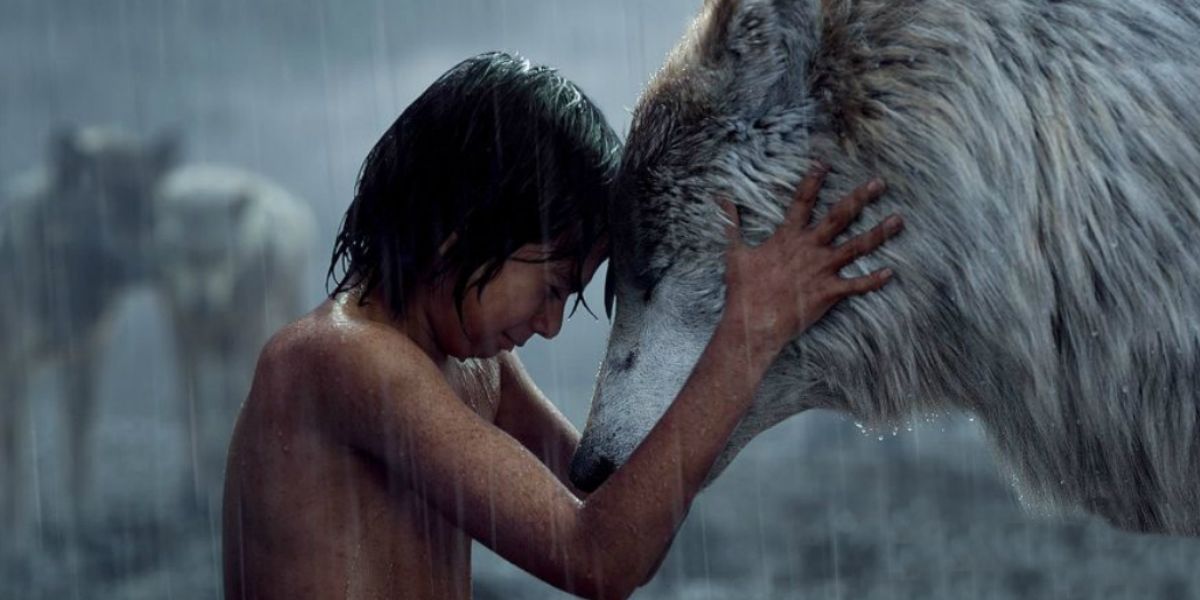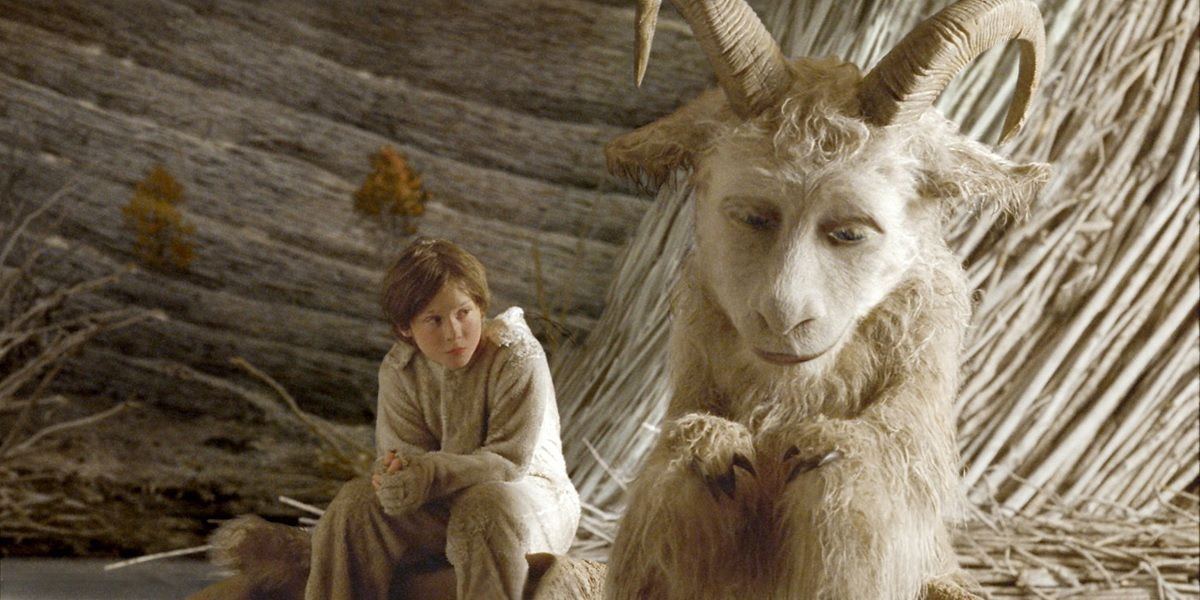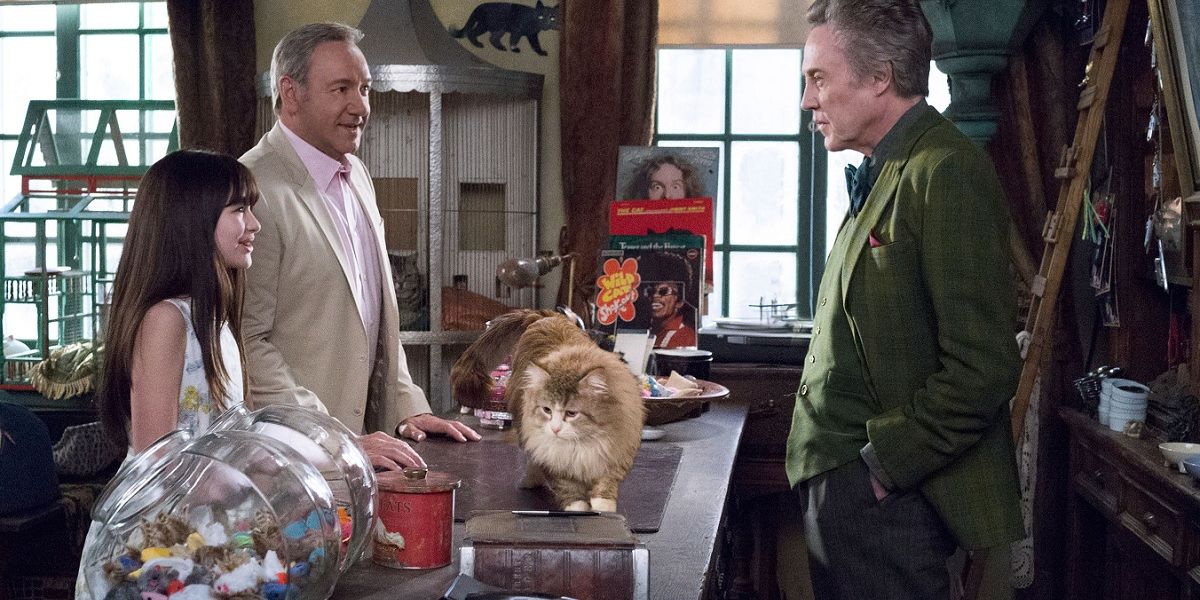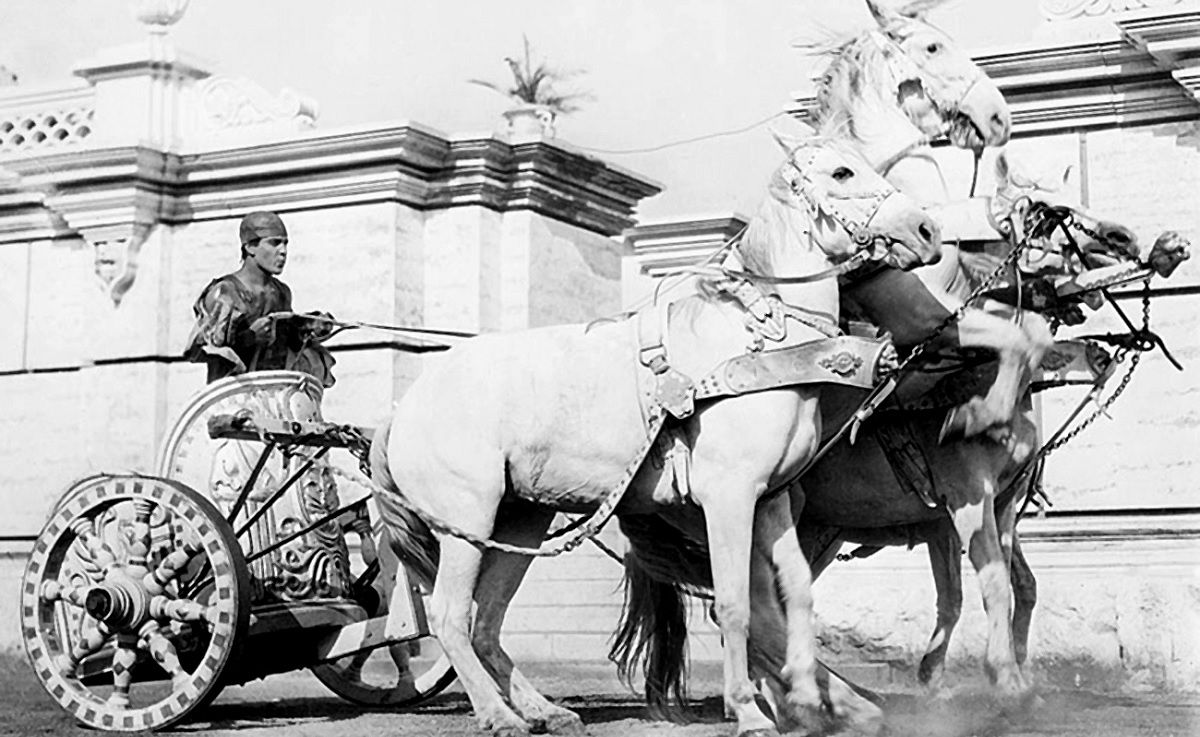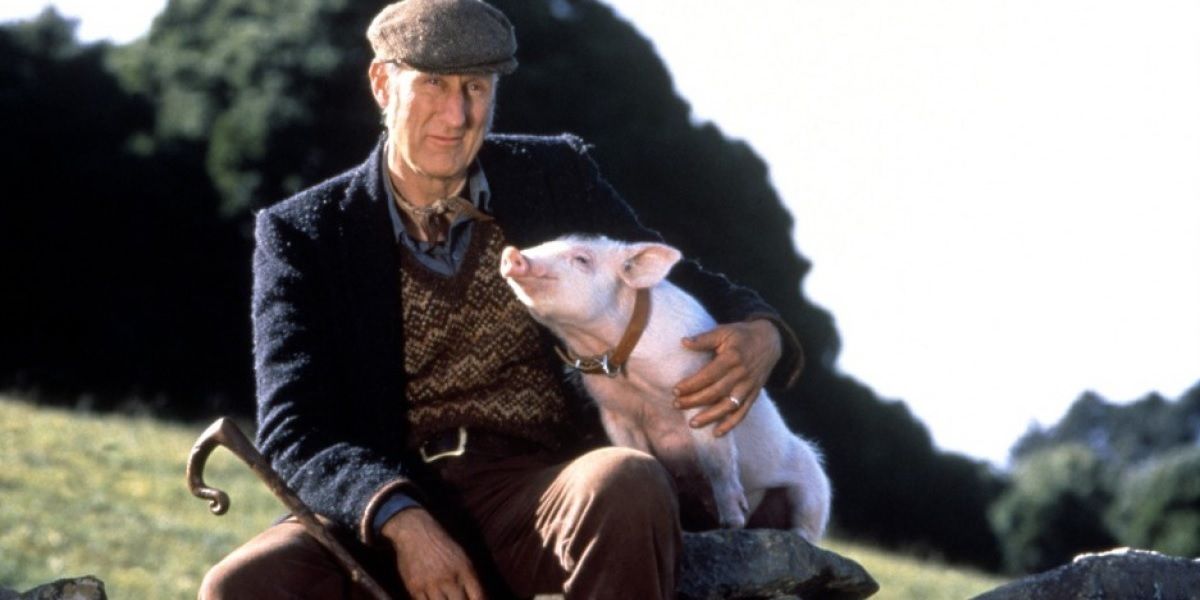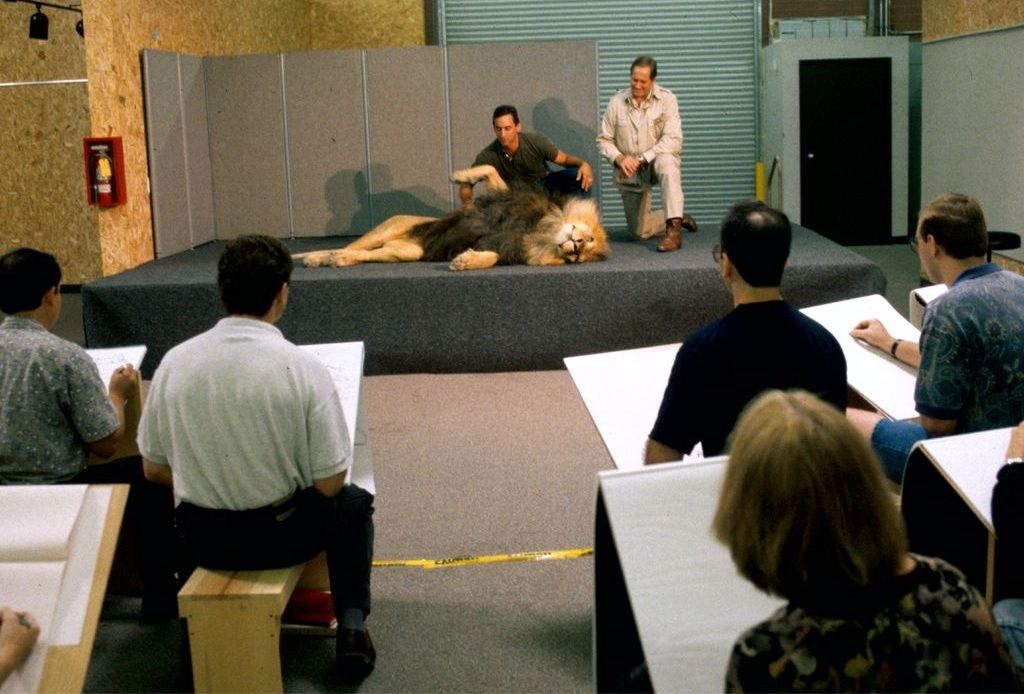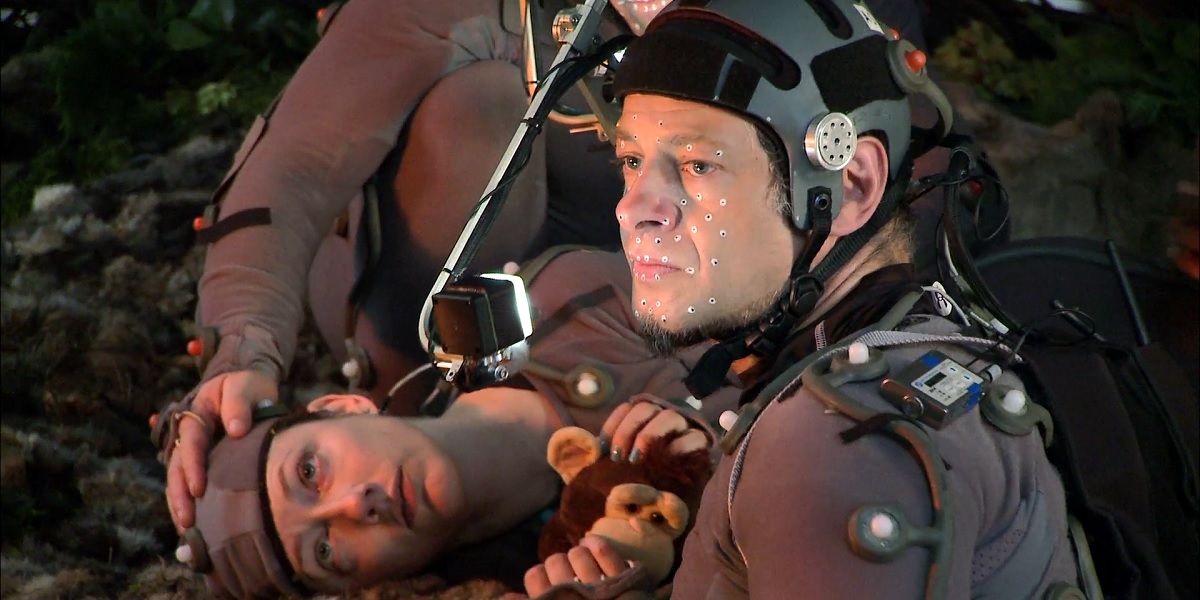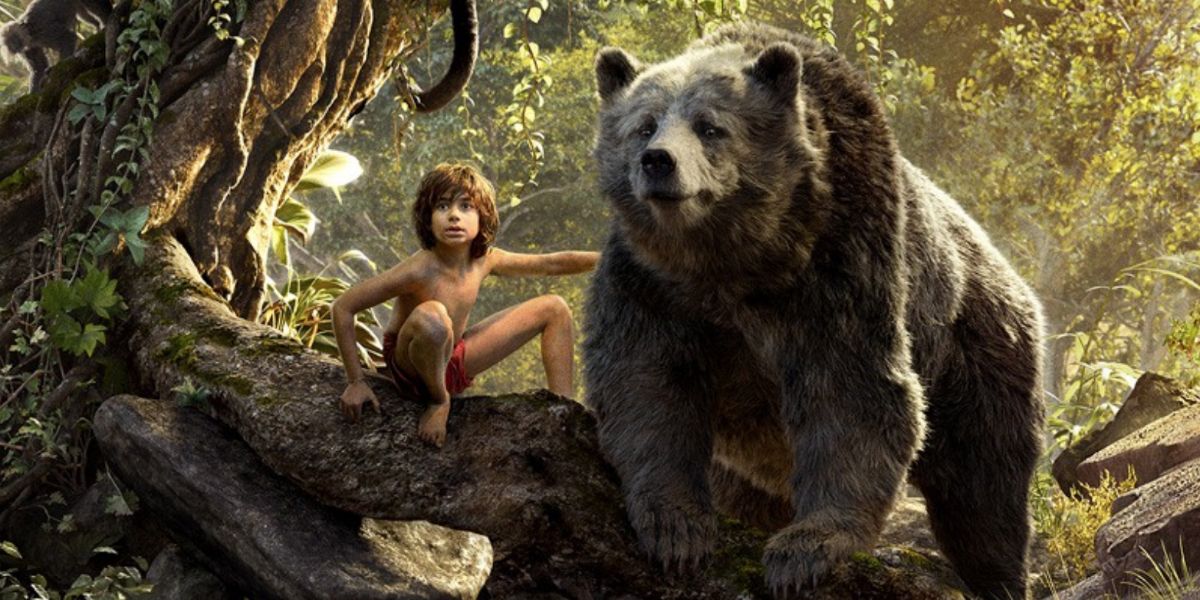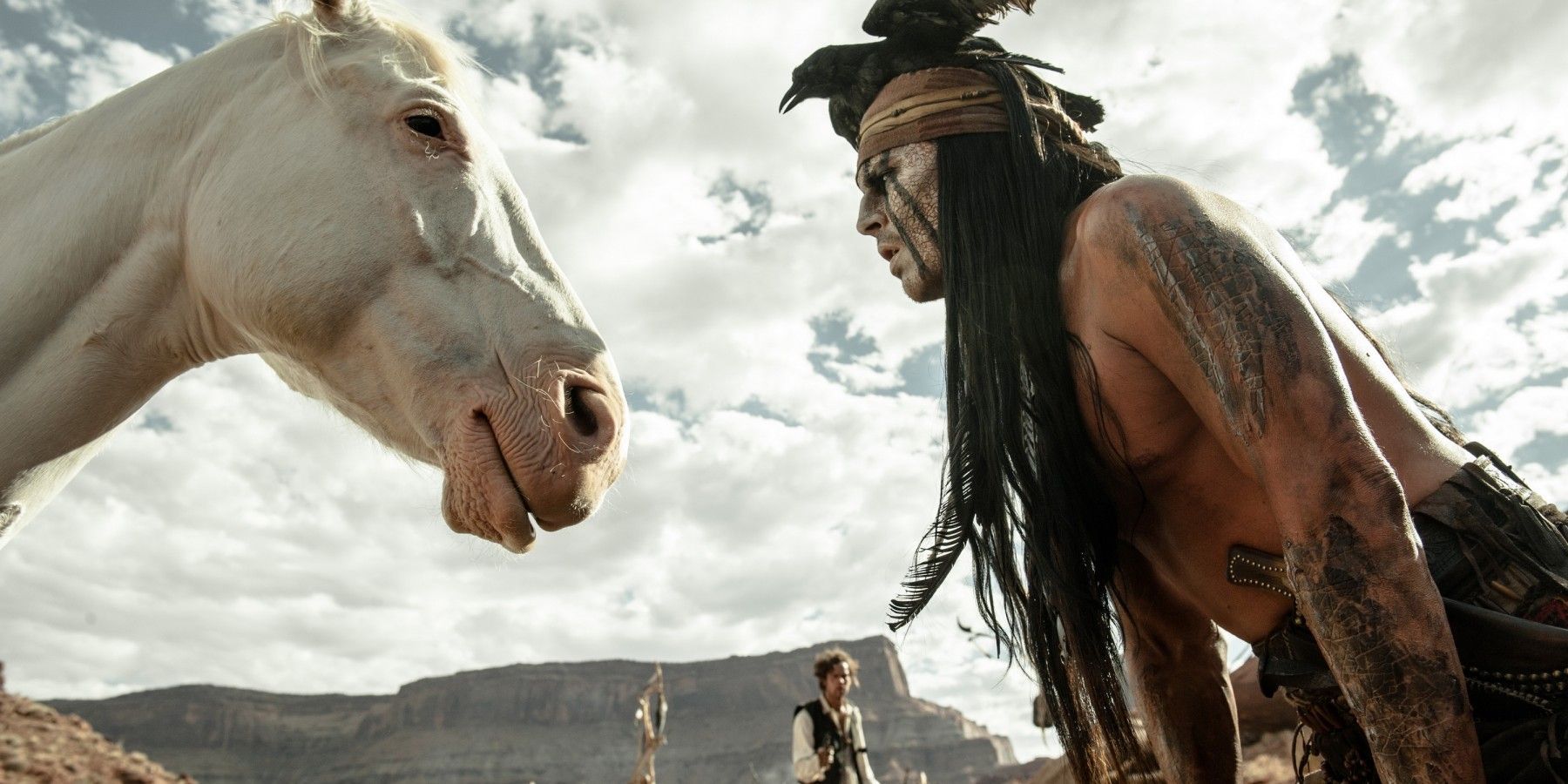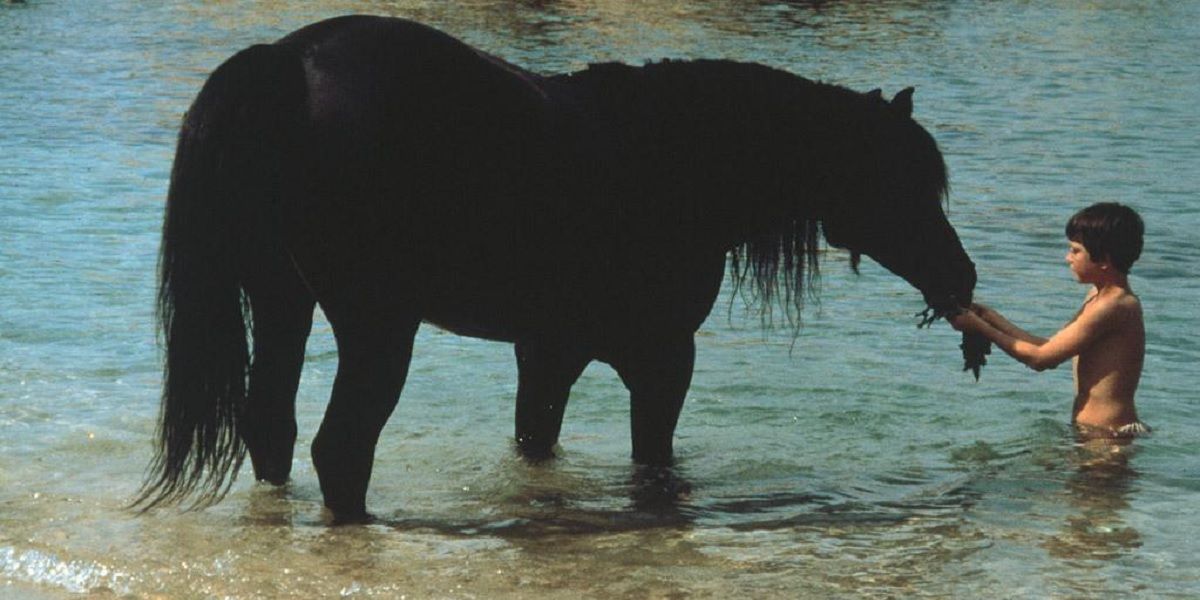The footage being projected onto the theater-sized screen look like it was taken from a nature show: a wrinkly-necked tortoise creeps slowly along the ground, before being startled and tucking its head and limbs inside its shell; in another clip, the hoopoe bird with its fan-like crest; in another, a vibrantly-colored bluebird. These creatures weren't filmed for episodes or Life or Planet Earth, though; in fact, they're not even real. This is test footage created by visual effects company MPC, which convinced director Jon Favreau - who has previously been very vocal about his love of practical effects - to direct a new adaptation of The Jungle Book with only one live-action performer and an entire jungle full of CGI animals.
The appeal of making a movie like The Jungle Book without actually using any animals is understandable. Hollywood's history is full of horror stories about the treatment of animals - particularly, in the golden age of westerns, horses - and even today animal cruelty scandals continue to emerge from the industry, thanks in part to the ubiquity of smart phones with built-in cameras. Ever since a horse died after being driven off a cliff in search of the perfect shot in 1939 western Jesse James, the majority of productions involving animals have been monitored by the American Humane Association. But while the treatment of animal performers has vastly improved over the past few decades, high-profile cases of animals coming to harm in the name of entertainment demonstrate the risks involved with using live animals - both from an ethical standpoint, and a PR standpoint.
The potential for allegations of abuse isn't the only problematic aspect of using live animal performers on a film set. During the filming of Where the Wild Things Are, director Spike Jonze and the crew had so much difficulty shooting one scene in particular that behind-the-scenes videographer Lance Bangs turned the ordeal into a short film called The Insane Difficulty of Filming a Dog Running and Barking At the Same Time. The film shows an exhausting night shoot in which Jonze, the animal trainers, and the rest of the crew try everything that they can think of to coax the furry diva into performing the two tasks simultaneously. "They just don't," the trainer explains helplessly. "I mean, he stops and barks. He doesn't bark and run."
"Never work with animals or children," is advice that Hollywood would probably love to follow, were it not for the fact that most movies require both to one degree or another. Films like The Jungle Book, or the recent revival of the Planet of the Apes franchise, have the benefit of massive budgets and large teams of animators to work on piecing together digital animals instead of flesh-and-blood live performers. Even a movie like Nine Lives, a family comedy starring Kevin Spacey as a workaholic father who gets stuck in the body of a cat called Mr. Fuzzypants, was created using a combination of a live animal performer, and a CGI creation that could take over when the slapstick begins.
Outside of these examples, it's difficult to get a clear picture of what kind of impact the improvement and proliferation of CGI has had on the demands for live animals in film productions. Speaking to the New York Times in 2001, the communications manager for the AHA's Film and Television Unit, Karen Rosa, said that there was an increasing demand for animals in Hollywood: "Last year we had 800 productions involving animals. This year we have about 900. It's been going up about 100 a year for several years now." Interested to find out if this was still the case 15 years later, I asked Dr. Kwane Stewart, the current head of the AHA's No Animals Were Harmed program, if the numbers are still going up every year.
"Numbers over the last few years, it’s leveled off a little bit. It varies. From season to season, it will dip and then it will raise. But in my three years, I’ve noticed that it jumped, then it sort of went down, then it started to come back up again. It really depends on, again, the feasible nature of certain movies being made, like westerns. So westerns were big a few years ago and then they crashed after The Lone Ranger. And now they are starting to show a resurgence. Obviously, with westerns you have many, many horses, so the animal work really climbs. And then when westerns sort of take a break, you’ll see a little dip just because of that genre of movie being made or not being made."
Some animal rights organizations and activists, most notably PETA, take a hard line stance on the use of animals for any kind of entertainment purposes. PETA has attracted a significant number of celebrity endorsements, and last year threw a star-studded 35th anniversary gala at the Hollywood Palladium in Los Angeles, so the charity's influence in Hollywood should not be underestimated. On its official site, PETA condemns the use of animal performers in film and TV, particularly in light of "all the highly advanced technologies that are available today - including animatronics, animation, computer-generated imagery, and more." From a hardcore animal rights perspective, a future in which CGI has made live animal performers obsolete is a bright future indeed.
The debate over whether animals should be used in movies and TV at all is one that the AHA's Film and Television Unit prefers not to get involved in. Stewart emphasizes the fact that No Animals Were Harmed is an animal welfare program, not an animal rights program; the role of its representatives is to monitor the safety and treatment of the animals used on set, not to decide whether the animals should be present at all.
"There was a lot of discussion, again, going back a decade or so ago about whether it was ethical or not to work chimps. We had thought about taking a position on that, because, as an animal welfare advocate, a lot of us know it didn’t seem right. But when we said we were not going to support films that had chimps, we were actually not going to send reps to those films. Then those chimps were left without an advocate or a voice, in essence. So we weren’t there to advocate for better welfare, or care, or a decent sleep schedule, not working them 14, 16 hours, things like that. We weren’t there to advocate for that.
"And so, I think in certain instances, they weren’t provided the best welfare. So we realized that wasn’t the best approach, because they were going to use them anyways, just without us. So we pulled back and said, 'If any animal is ever going to be worked, we are going to be there. We are not going to get in the middle of an animal rights fight, which animal should or should not be used.' We simply advocate that if an animal will be on set, we are going to be there to be its loudest voice for its best care."
Watching clips from Favreau's version of The Jungle Book is an interesting experience. Though the animals on screen were created by the same people and use the same technology as the short clips of the bird and the tortoise shown earlier, they are not photo real; there is a never a moment where it really feels like young lead Neel Sethi is standing next to a living, breathing animal - at least, that moment never happened for me.
The idea of being able to talk to animals (or at least hear what they're thinking) is pervasively appealing, which is perhaps why Hollywood so frequently comes back to talking animal movies - from Homeward Bound to The Grumpy Cat Movie. One of the best-loved talking animal movies to date is Chris Noonan's 1995 animated film Babe, which used live animals on set and applied early CG techniques to animate their mouth movements. Unsurprisingly, Babe was one of the movies that Favreau looked to while developing The Jungle Book.
"We were talking, we said why is Babe interesting and these other talking animal movies aren't? And it was that, well, it was the real animal behaviour. And there were real animals being used to, you know, it was edited together and then they added the performances. And so we set out to do that, except animating the entire animal in this case."
Arguably the real predecessor to The Jungle Book is not Babe, but animated Disney films like The Lion King and Bambi (and, of course, The Jungle Book). For Favreau's version of The Jungle Book, the animators had access to a wealth of footage of the animals that they were creating, but for The Lion King Disney actually had live animals brought in so that the animators could study their movements up close and get a real sense of their behavior. Speaking in behind-the-scenes footage, Mark Henn, the supervising animator for Young Simba, explained the process of blending an animal's realistic movements with a human actor's performance.
"We actually got to observe these lions playing, and afterwards got to touch and pet them. So it was a combination of the actual animal, the lion, and its unique qualities, coupled with some of the nice appeal and character that I saw in [Young Simba voice actor] Jonathan [Taylor Thomas]. I really started mixing the two together, as well as then putting my own ideas of the acting and the performance into the character, and that all kind of comes out as Simba, hopefully."
The collaborative performance that is involved in creating CGI animal characters has been a point of contention in the past. Andy Serkis, who is also directing an adaptation of The Jungle Book that will also feature entirely digital creations, came under fire during the promotion of Dawn of the Planet of the Apes, when he said that Weta Digital "have now schooled their animators to honor the performances that are given by the actors on set." This angered some animators, who felt it diminished their role in creating a character based on a motion capture performance.
Of course, the fact that apes are about as close to humans as it's possible to get in the animal kingdom may well have played a significant part in making the ape characters in the rebooted Planet of the Apes franchise so convincing. When it comes to animating creatures like panthers and snakes and wolves, and making it look convincing instead of cartoony, there's a greater level of translation required. "If you just did motion capture and put it on a tiger, it would be very weird," Favreau explains. "Because tigers don't emote the same way humans do."
Another challenge that comes with placing live performers alongside CGI creations is authenticity. Reacting to a green screen or talking to a tennis ball on a stick adds an extra barrier to an actor's ability to create a connection with the character that they're theoretically going to end up on screen with. There are a few common ways that directors try to get around this; in Guardians of the Galaxy, for example, the character of Rocket was played on set by Sean Gunn, so that the other actors had someone to play off of. Favreau explains that he employed similar techniques for The Jungle Book.
"A lot of it we used puppeteers, not because we ever filmed the puppets, but because when kids are talking to a puppet they don't look at the person. They look at the puppet and the puppet can also improv and be very spontaneous with the kid... and then sometimes I would get in there and then sometimes the kid would be looking at me. So if it's him walking with Baloo I would be the right eye-line and I would talk with him."
Based on the footage so far, The Jungle Book doesn't feel like the huge leap forward in technology that, for example, Rise of the Planet of the Apes felt like. It does, however, demonstrate that it's entirely possible to make a movie about animals without actually using any animal performers, and perhaps for the current generation of children it will be as easy to connect emotionally with these new versions of Bagheera and Baloo as it was for children of the 1990s to fall in love with Babe.
Whether CGI animals will ever fully come to replace live animal performers is another matter, however. While exotic creatures like lions and tigers and apes may be easier to animate than to tame, using domesticated animals such as dogs, cats and horses is still altogether more practical than trying to create CGI versions of them. "I really can’t imagine a western being made with CGI," Stewart says as an example. "One, it would be too expensive. And secondly, it just wouldn’t look like the same kind of movie if you replaced all horses with CGI."
That's the crux of the argument for continuing to use real animals in movies. Does it matter if an actor is talking to a tennis ball, or to the director, or to a puppet, if ultimately they're still not talking to the "performer" that audiences will actually see on screen with them? Again, perhaps a generation of children who grew up forming attachments to CGI characters will be able to make that mental leap more easily. For Stewart, however, nothing compares to the real thing.
"As a veterinarian, the most common question I get asked is: 'Why did you want to be a vet? What made you want to become a vet?' For me, it’s really one of those neat coincidences in the universe. For me, it was because of a film that I saw when I was seven years old... My mother said we walked into this film. I sat there motionless for two hours, which is hard for a seven-year-old, and I laughed, and I cried. And when I walked out, she was holding my hand. I looked up at her and I said, 'When I grow up, I want to be an animal doctor.'
"The movie was Black Stallion. Still one of my favorite movies to date. There’s something about that majestic horse on the screen that obviously grabbed me and spoke to me. And even today it still gives me chills when I watch the movie and I see that horse. It changed my life. I don’t think you can replace that with CGI. The interaction between that boy and that horse and the emotion that you see on the screen, I just don’t think that can be replaced."
Of course, the connection between human and animal on screen is not always a loving one. In recent horror movie The Witch, actor Ralph Ineson found himself in a hate-hate relationship with Charlie, the 210 pound billy goat who portrayed the malevolent Black Phillip. During one scene Charlie rammed his horns into Ineson's ribs, dislodging a tendon and landing the actor in the hospital. "He was horrible. Really, really horrible," Ineson told THR. "From the moment we set eyes on each other it was just kind of hate at first sight. He had two modes: chilling out and doing nothing, or attacking me." A CGI goat would no doubt have been much better behaved, but would The Witch have been such an effective film if Black Phillip hadn't been quite so horrible?
While there's certainly room in theaters for animal movies that don't feature any real animals, like The Jungle Book, it seems unlikely that the industry will ever get to the point where animal performers are phased out entirely. True, the anecdote from the set of Where the Wild Things Are demonstrates the potential headache of filming even ostensibly simple scenes with domestic animals. But filmmaking is, by its very nature, comprised of a series of headaches of varying severity, and film shoots have been held up for far sillier reasons than an uncooperative dog over the years. It's more likely that the current trend of using CGI for "difficult" scenes will persist and eventually stabilize, with the decision of whether to use a live animal or to add an animal in post-production based on pure pragmatism. A character is riding a horse across a field? May as well use a real horse. That horse needs to fall off a cliff? It's probably time for CGI to take over.
It would be doing a huge disservice to the work of the animators who worked on The Jungle Book to suggest that their efforts are 'the easy route'. Using CGI is less fraught with physical danger (both to the actor and crew, and to the animals themselves) and practical challenges than using a live panther or tiger on set, certainly, but there's no less passion, talent and hard work behind it. The real question is whether today's children, so used to seeing CGI characters in live-action movies, will be able to feel the connection between Sethi's Mowgli and Murray's Baloo in the same way that Stewart felt the connection between Alex and The Black in The Black Stallion.
The Jungle Book opens in U.S. theaters on April 15, 2016.

